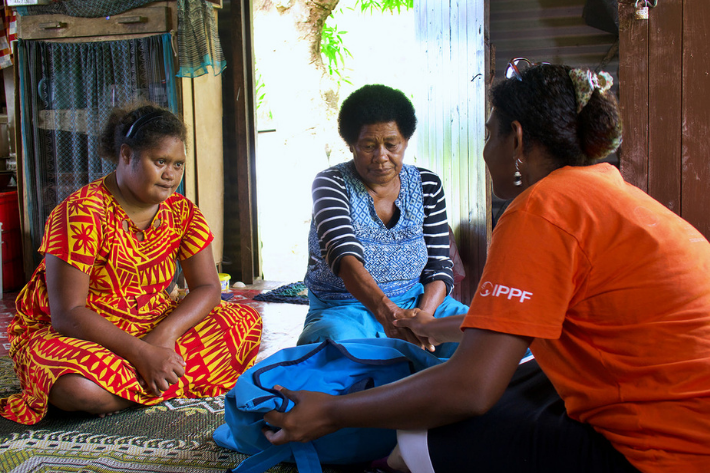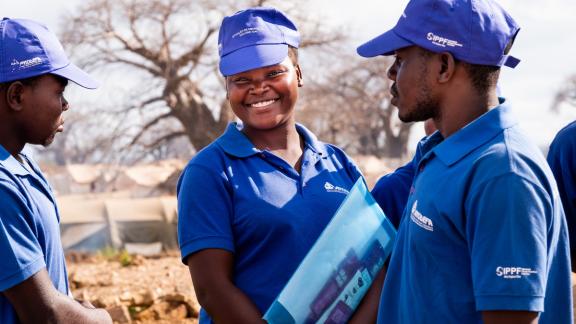An increasing number of people globally live in areas badly affected by conflict, natural disasters, and other fragile humanitarian settings. As a result, over the past decade there have been an estimated 51 million new and existing internally displaced people, and the number of refugees has doubled to 20 million. Women and girls are disproportionately affected by these events by a significant margin – but why?
When structures of stability and safety are disrupted (or in some cases, never existed at all), women and children – particularly girls – are left especially vulnerable. Lacking the usual protective measures such as the family unit or home, they are at an increased risk of rape, trafficking, forced marriage, and child/early marriage. A staggering 70% of women in humanitarian settings are likely to experience gender-based violence.
This brings us to the crisis currently at the forefront of many people’s minds: Afghanistan. Right now, there is a serious risk emerging for women and girls within the country, which may well lead to restrictions on their movements and choices, grave concerns over their personal safety, and blocked access to essential healthcare. Years of hard work towards gender equality and the prevention of violence against women are threatened to be undone and worsened in Afghanistan – a troubling situation which must be mitigated.
Exposing weaknesses in health systems
Humanitarian crises expose weaknesses in health systems, and as such there is a heightened risk of unattended births. With one in five women likely to be pregnant at the time of a crisis, 20% of these deliveries will experience complications. Transmission rates of STIs, including HIV, also increase in emergencies, as do unsafe abortions.
The right to education takes a major hit in times of crisis. Adolescent girls in conflict zones are 90% more likely to be out of school, and as a result of the COVID-19 pandemic almost 24 million children, adolescents, and young people were at risk of not returning to school in 2020 – including 11 million girls and young women. Not going to school increases the possibility that girls will become victims to various types of violence such as child, early and forced marriage, and increases the risk of unplanned teenage pregnancies.

In fact, COVID-19 has only exacerbated gender inequality and created a double crisis in tandem with humanitarian emergencies. Rates of gender-based violence have gone up around the world in both stable and crisis settings, with 15 million new cases predicted for every three months of lockdown. It has also impacted many people’s ability to work, with women and young people aged 15-29 working in the informal sector being hit the hardest. The economic empowerment of women, manifested in their choice of where and when to work, and of the terms and conditions of that work, is intimately linked to reproductive empowerment and reproductive outcomes.
The climate crisis also poses a severe threat to women and girls, and as the situation continues to become more serious, the sexual and reproductive health and rights of millions in high-risk areas will continue to deteriorate. Deeply ingrained, systemic discrimination means they are more likely to experience the harmful effects of the climate crisis, including reduced or unavailable maternal health services, reduced access to contraceptive and safe abortion care, reduced access to safe water during pregnancy and childbirth, an increased risk of SGBV, as well as the wider threat of displacement.
What is IPPF doing about it?
IPPF – through our Member Associations – are responding to the climate crisis, protracted humanitarian situations, and the impacts of COVID-19 on women and girls, by ensuring the continuity of sexual and reproductive healthcare in the hardest hit, and hardest to reach, places. In 2020, we reached 5.5 million people with lifesaving healthcare in fragile and humanitarian settings.
Sexual and reproductive health is a key component of the care needed for people experiencing SGBV, as well as those needing safe abortion care, maternal healthcare, STI treatment and more. But SRHR in humanitarian settings is often overlooked and remains under-resourced – what we are currently witnessing around the world only confirms the urgent need for further action by those in positions of power.
Main image: a member of an outreach team visiting women in the Gaza Strip, Palestine
when
Subject
Emergencies










